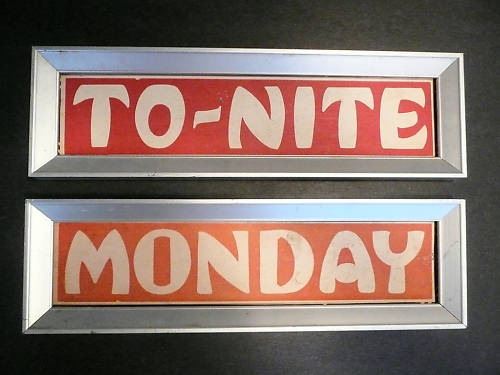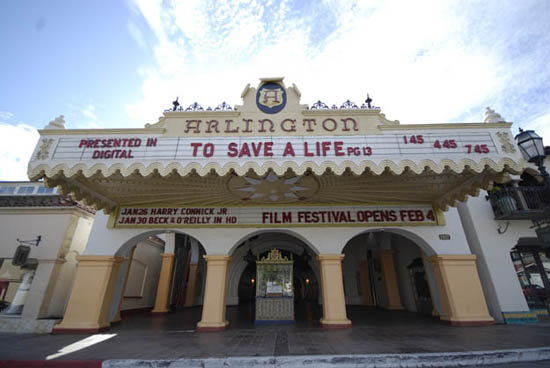|
|
This topic comprises 2 pages: 1 2
|
|
Author
|
Topic: Can Anyone Name This Font?
|
|
|
|
|
|
|
|
|
|
|
|
|
|
|
|
|
|
|
|
|
|
|
Bobby Henderson
"Ask me about Trajan."

Posts: 10973
From: Lawton, OK, USA
Registered: Apr 2001
|
 posted 09-26-2010 07:12 PM
posted 09-26-2010 07:12 PM




quote: Joe Redifer
He insisted that strokes or "outlines" are never, ever used in graphic design.
Joe, your boss could be buying his groceries blind-folded. Food package design has lots of examples where lettering is outlined, drop-shadowed, highlighted and more.
I do agree tasteful restraint should be used whenever possible. And that often means leaving lettering not embellished with various effects. But sometimes those embellishments are necessary to give a certain design the kind of visual "pop" it needs to grab attention or at least stand out from a noisy background. And that's why so much of food package design is so cheesy with the various lettering embellishments. The brand has to do what it can to stand out among all the other packages on the shelf. Loud color, certain visual elements and tricked out lettering are pretty standard in many kinds of package design.
Sign design isn't all that different, although there are more opportunities for tasteful design.
quote: Randy Stankey
Cursive fonts almost always suck when shown on a video screen, even if it's Hi-Def. Contrast between foreground and background colors can make it even worse.
It really depends on the script typeface. Letter stroke width is the real key. A typeface with an extreme contrast of stroke widths (very thick and thin) will be lousy for video use. The same kinds of fonts suck badly for any kind of signs even though some customers insist they be used. I'm not fond of Commercial Script because of its thin/thick stroke widths. The only way such a typeface works in signs and many other applications is by being set very large on the page or display.
"Modern" class typefaces, such as Bodoni or Didot, are very bad for the same reasons. They're not script typefaces, but since some of their features are very thin such typefaces are usually best avoided unless they can be set at really large point sizes -like when they're making up the headline of a magazine like Vogue.
quote: Mark Lensenmayer
My wife is a trained dyslexic tutor, and she's now using Myriad Pro. This font is recommended by many national dyslexic teaching organizations.
I'm confused, is Comic Sans the one recommended by those dyslexic teaching organizations or is Myriad Pro good to use?
I use Myriad on occasion. It's a decent more rounded alternative to Frutiger, although Myriad doesn't have the really bold "black" weights of Frutiger. Windows Vista and Windows 7 don't support Adobe Type Manager so you have to use Windows XP to use the old Type 1 Multiple Master version of Myriad. I don't know if Mac OSX will support Type 1 Multiple Master fonts. It wouldn't surprise me if it doesn't. Older versions of Adobe Illustrator used to have a Multiple Master weight slider palette (which saved the trouble of installing various instances in ATM). None of the CS versions of Illustrator have it.
| IP: Logged
|
|
|
|
|
|
|
|
|
|
All times are Central (GMT -6:00)
|
This topic comprises 2 pages: 1 2
|
Powered by Infopop Corporation
UBB.classicTM
6.3.1.2
The Film-Tech Forums are designed for various members related to the cinema industry to express their opinions, viewpoints and testimonials on various products, services and events based upon speculation, personal knowledge and factual information through use, therefore all views represented here allow no liability upon the publishers of this web site and the owners of said views assume no liability for any ill will resulting from these postings. The posts made here are for educational as well as entertainment purposes and as such anyone viewing this portion of the website must accept these views as statements of the author of that opinion
and agrees to release the authors from any and all liability.
|

 Home
Home
 Products
Products
 Store
Store
 Forum
Forum
 Warehouse
Warehouse
 Contact Us
Contact Us




 Printer-friendly view of this topic
Printer-friendly view of this topic





![[Smile]](smile.gif)




![[Razz]](tongue.gif)


![[Wink]](wink.gif)

![[Roll Eyes]](rolleyes.gif)







